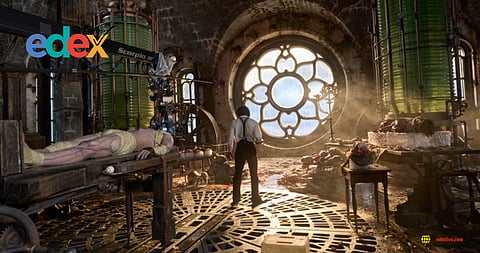

Tamara Deverell, production designer for Guillermo del Toro’s “Frankenstein,” described her awe upon seeing the nearly completed set of Victor Frankenstein’s lab. “I walked into the lab set when we were just finishing it,” Deverell says, “and I was like, ’It … it’s alive!” The massive laboratory, set atop a Scottish stone tower with a large round window, features intricate apparatus and a malformed body on an operating table, embodying del Toro’s vision of a handcrafted epic. “I wanted a handmade movie of an epic scale,” del Toro told AP.
A collaborative effort
Del Toro’s adaptation, a $120 million Netflix epic, merges various filmmaking arts. “It’s one big group of monster makers,” says creature designer Mike Hill. The team, including costume designer Kate Hawley and cinematographer Dan Lausten, synchronized their efforts to bring the monster, played by Jacob Elordi, to life. Hill aimed for a newborn-like creature, avoiding a garish appearance. “I knew that if we made his face too garishly horrible, when you’re in a tight close-up on this character, if you’re looking at wounds and gore, you’re distracted,” Hill says.
Innovative costume and lighting design
Hawley crafted the creature’s evolving look, including a tattered hooded cloak, while avoiding period clichés. “His first brief was to me, ‘I don’t want any (expletive) top hats,’” Hawley says. Lausten’s cinematography embraced bold contrasts and candlelit scenes. “We’re not afraid of the darkness,” Lausten says, highlighting their use of single-source lighting and deep shadows to create atmospheric gothic visuals.
Musical soul of the creature
Composer Alexandre Desplat’s score captures the creature’s unspoken emotions. “I need to bring out their unspoken voice, their unspoken emotions,” Desplat says. His lyrical composition, featuring violinist Eldbjørg Hemsing, complements Victor’s creative trance with a waltz, reflecting the film’s artistic synergy.
